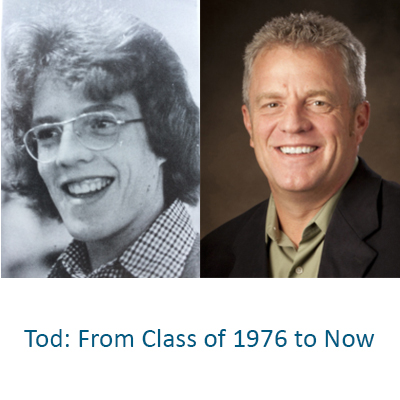As he prepares to retire and enjoy fishing and family time, Antea Group Vice President and Food & Beverage Segment Leader Tod Christenson talks with us about the changes he’s seen and lessons he’s learned over his 30+ years as an EHS and sustainability pro.
How did you end up where you are today?
It was unintentional, I’m afraid—I’ve always appreciated nature and conservation, but started out as math major in undergrad before switching to geology. Then I went straight to grad school for dual masters in geology and organic chemistry, and actually taught college science for a while. At one of my first environmental jobs, I met the people who eventually started Antea Group, and followed them shortly after. I never had a particular plan for what to be when I grew up (and maybe I still don’t)--I just followed my instincts, took opportunities as I saw them, and did what I enjoyed.
And how did you come to specialize in food & beverage?
Back in the early days I was heavily involved in environmental remediation and health and safety work for the oil and gas industry. The turning point for me came when a former Antea Group colleague contact who was then working for a major global beverage company encouraged me to make the transition into sustainability work. My experience and network expanded from there, and in 2006 I helped found the Beverage Industry Environmental Roundtable (BIER). Later, my focus was formalized when I was named as the food and beverage segment leader here for the firm.
What changes have you seen over the last 30 years?
The biggest change is seeing companies and brands move from a reactive to a proactive posture. (Among industry leaders, at least.) Social expectations and pressures on companies have changed dramatically, as have consumer attitudes. Environmental stewardship and resource management are strategic priorities now for most companies because the costs of failing to care for employees and the environment has gotten so high.
In just the last five years, I’ve seen companies grow more and more focused, understanding their own unique social and environmental dependencies and the impacts those can have. Companies know what’s material to their business (both financially and in terms of resources) and maturity levels have increased across the board.
What are the biggest disrupting factors facing EHS and sustainability teams?
There’s really just one, technology--information management, big data, AI, drones, robotics, and so on. Instead of a full factory line of workers, you have huge facilities being run by a few people sitting in control rooms. Companies will still need auditing, surveillance, cleanup, other physical tasks, but will be questioning how those tasks are accomplished. Can we do things differently? Using VR for audits and remote cameras in hazardous environments are just a few of the possibilities we’re seeing. This can be a positive change—fewer people are in harm’s way, and there are obvious gains in efficiencies, but the challenge going forward will be what companies do with those gains.
What’s your best advice for environmental and sustainability managers today?
Be like a four-year old and always ask “why?” (Just don’t be a jerk about it.) Get to the root causes and try to understand the big picture. I like to use the analogy of a beach ball—people standing in different places may see the same object very differently—to one it is a blue ball, to another red, and only someone standing far enough back can see that they’re all looking at the same multi-colored beach ball. Seek context and perspective, then just shut up and listen.
What about for companies looking to be leaders in EHS and sustainability?
Never quit innovating or questioning if there are better ways to do things, and don’t accept the status quo. The front of the train can see a light at end of the tunnel, but the end of train doesn’t even know the tunnel is coming. Balance your long-term and short-term bets and always be looking for your blue ocean opportunities. I guess that’s advice for business as a whole and not just for EHS&S, but the two are becoming increasingly intertwined and a company that does well in one is well-positioned to excel in the other.
Is the glass half full or half empty?
Hall full.
Thanks so much for your years of service and expertise, Tod—enjoy retirement!
Keep up with Tod on LinkedIn or learn more about our work with the food & beverage industry.

Want more news and insights like this?
Sign up for our monthly e-newsletter, The New Leaf. Our goal is to keep you updated, educated and even a bit entertained as it relates to all things EHS and sustainability.
Get e-NewsletterHave any questions?
Contact us to discuss your environment, health, safety and sustainability needs today.




